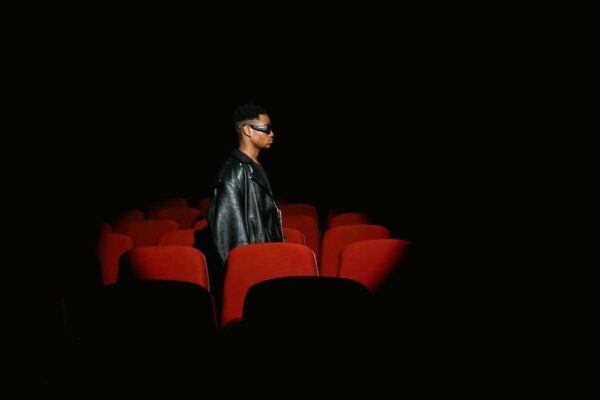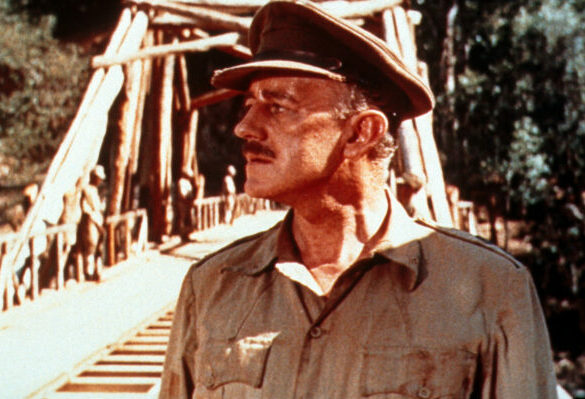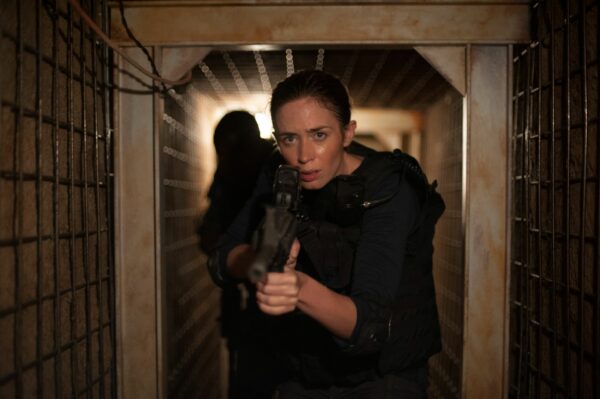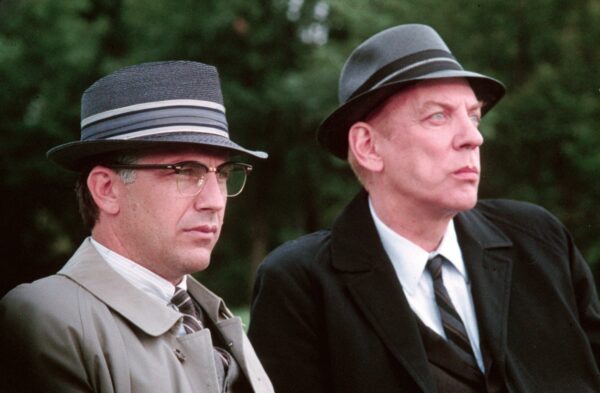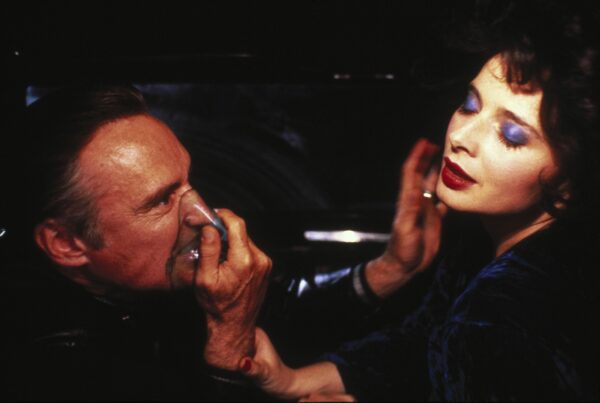
In our latest Top 10 rundown, we’re delving into oening scenes in movies. For more great video content and Top 10 movie lists, subscribe to our YouTube channel.
The opening sequence is one of the most important parts in any film. It’s at this point that filmmakers can decide on their world’s tone, theme, and rules.
A superb opening scene may make or break a film by providing an iconic, instantly recognisable moment that moviegoers will remember their whole lives. And, with names like Spielberg, Kubrick, and Scorsese all producing legendary openers throughout their careers, all of the masters understand their value.
We combed Hollywood and the All The Right Movies archives to compile our list of the best ten opening scenes of all time, covering all eras, genres, and types of openers. For more great video content and Top 10 movie lists, subscribe to our YouTube channel.
Subscribe to our YouTube channel
10. Monologue
What is it?
Cinema is a visual medium but sometimes the spoken word can be just as effective. A great monologue is a collaboration between director, writer and actor and, when done well, has created some of the most memorable openers in Hollywood.
Classic examples:
Patton’s (1970) powerful and patriotic speech helped actor George C. Scott win – and turn down – an Academy Award. Cate Blanchett’s monologue that opensThe Fellowship of The Ring (2001) prepares the audience for an epic fantasy tale. And Woody Allen confirmed his status as one of the great writers of character in the first minutes of Annie Hall (1977).
Our winner:
There really is only one place we could ever go for our favourite, though. And that’s Francis Ford Coppola’s gangland juggernaut The Godfather (1972). The film opens with Amerigo Bonasera recounting the story of his daughter, beaten by two American men, in agonising detail and begging an unseen party for vengeance. The camera slowly pans out, we see the Corleone family for the first time, and are transported immediately into Coppola’s land of violence and retribution. The director’s artistry is everywhere, and it is the perfect way to introduce Don Corleone to the world.
9. In Media Res
What is it?
Sometimes, movies don’t give us any set up at all. There’s no narration, no title cards, little-to-no context of any kind to what is going on. Sometimes, movies like to draw us in by dropping us In Media Res into the middle of a narrative already in motion.
Classic examples:
Vertigo (1958) opens in the middle of a rooftop foot chase. Dunkirk (2017) carries the weight of history as it puts us into the Allies desperate World War II evacuation. And Goodfellas (1990) captures the essence of its three main characters in about four lines of dialogue by landing us in their midst with a bump.
We’re heading to a galaxy far, far away and Star Wars (1977), though, for our pick in the number 9 spot.
Our winner:
After the initial music blast and opening crawl, the camera pans us down into space – deep and vast. Suddenly, a rebel spaceship screams into view. It’s on the run, but from what we don’t know. And then we see it. An enormous Star Destroyer rumbles over the frame and goes on, and on, and on. Writer-director George Lucas sets up his world – the powerful Empire hunting the diminishing Rebel Alliance – with one iconic shot, in what might be Star Wars’ finest moment.
8. Montage
What is it?
One of the most powerful tools in the filmmakers arsenal is the montage. An editing technique developed in the earliest days of cinema, it allows directors to break up narrative, segue thematically relevant shots into one cohesive whole, or just tell a story very, very quickly.
Classic examples:
Manhattan (1979) gives us a whistle stop tour of Woody Allen’s beloved New York borough. No Country For Old Men (2007) establishes itself as a neo-western with a series of stunning, wide open range shots. And Watchmen (2009) chronicles the history of superheroes in a dazzling 5-minute opening.
Our winner:
For sheer tear duct-bursting, heartstring-snapping genius though, nothing can match Pixar’s unforgettable opening to Up (2009). In a 10-minute masterclass of visual storytelling, we’re introduced to Carl and Elly and then flash-forwarded through their life together as a couple. The ups, the downs, the funnies, hopes, fears and, ultimately, the gut-wrenching heartache. It might be the best thing Pixar has done, and, well, that’s saying something.
7. Voiceover
What is it?
What if a movie needs to feed its audience a ton of exposition right from the off? There’s some major set up required and a credit sequence or title cards just won’t cut it? Well, when skillfully executed, there’s a stylish and trusted solution in voice over narration, and that’s what we’re looking at for our number 7 entry.
Classic examples:
Max Rockatansky describes his world of fire and blood in Mad Max: Fury Road (2015). David Fincher audibly and visually takes us inside the mind of his main character in Fight Club (1999). And Sam Elliott’s verbose and laid back narration instantly establishes the tone of The Big Lebowski (1998).
Our winner:
It’s in the 1950s where we find our pick, though, in the form of Billy Wilder’s film noir classic, Sunset Boulevard (1950).
An opening sequence that covers a few categories in our list, Sunset Boulevard drops us into the middle of a murder scene investigation, and combines it with exquisite shot-making. What really elevates it, though, is William Holden’s from-beyond-the-grave voiceover. Equal parts razor-shap, tragic, and brilliant, it was wholly original and influenced generations of filmmakers to come. Throw in the unforgettable imagery of a body face down in a pool, and you have one of the most iconic openers in Hollywood.
6. Title credits
What is it?
Not always an actual scene in the film, the title credits sequence can still play a major role in drawing an audience into a story, introducing characters, or establishing a world. Title credits allow filmmakers an opportunity to introduce us to their movies in thrilling, beautiful, and ingenious ways, and that’s why it’s taking the 6th spot in our rundown.
Classic examples:
Superman (1978) combines iconic titles with an equally iconic score to stunning effect. The Saul Bass-inspired animated titles on Catch Me If You Can (2002) are possibly Spielberg’s best. And Rosie Perez’ dance moves in the opening of Do The Right Thing (1989) are a near-hypnotic state to the film.
Our winner:
Even among these giants though, there is a clear winner for us, and that is Martin Scorsese’s masterful sports biopic, Raging Bull (1980).
Scorsese opens with a one-shot credits sequence that tells us one thing above all else – this is art. The black and white palette. Robert De Niro’s slow-motion shadow boxing. The classical score by Pietro Mascagni. Hollywood legend has it that Brian De Palma cursed Scorsese’s name the first time he saw this, and we don’t blame him. It’s peerless. And that’s why it made it as our number 6 pick.
5. Opening shot
What is it?
They say a picture is worth a thousand words, and that is certainly true of our next category – the striking opening image. This is when a filmmaker starts their story with a single shot that has symbolic significance, reveals character, or just drenches us in stunning imagery.
Classic examples:
Francis Ford Coppola establishes a theme of great beauty juxtaposed against the horrors of war in Apocalypse Now. (1979) Back To The Future (1985) covers off exposition, foreshadowing, and character introduction in one famous shot. And the soaring opening to The Sound Of Music (1965) is one of the most iconic helicopter shots ever filmed.
Our winner:
But it is in the filmography of one of Hollywood’s greatest artists where we find our pick. Stanley Kubrick and his dystopian crime nightmare A Clockwork Orange (1971).
The slow zoom out is a Kubrick trademark and this is the finest – and most oft-imitated – example. We start in close on main character Alex DeLarge, and a slow move out reveals the rest of his Droogs in the extraordinary – and frankly, bizarre – setting of the Korova milk bar. It’s surprising, unique, and so very Kubrick.
4. Tracking shot
What is it?
In the era of CGI and digital effects, long, one-take tracking shots are one of the few ways for a director to make us think “how?” And when utilised in the opening to a film, they can inspire wonder and awe in an audience. Tracking shots are a load of fun to watch, very difficult to film, and our list just wouldn’t be complete without them.
Classic examples:
The 8-minute one-shot opening to The Player (1992) is a technical achievement equal to anything else on this list. Alfonso Cuaron sends us orbiting the Earth in Gravity (2013). And the astonishing tour of a Mexican border town in Orson Welles’ Touch Of Evil (1958) is one of the great director’s greatest moments.
For our choice, though, we’re heading to Haddonfield, Illinois, and John Carpenter’s seminal slasher, Halloween (1978).
Our winner:
In an opening sequence that inspired a thousand copycats, Carpenter puts us inside the head of a killer. We cross a street in a leafy suburb, enter a house via a back door, creep up the stairs, and brutally stab a young woman to death. In one astounding POV shot, Carpenter invokes suspense and terror by making us helpless to prevent what appears to be our own actions, and enforced the steadicam as a significant filmmaking tool.
3. Dialogue scene
What is it?
On to number 3, we’re looking at the dialogue-based opening. Filmmakers often like to start their movies with a bang but, when character is key, a more indirect approach may be required.
The Social Network (2010) is an Aaron Sorkin word whirlwind as Facebook founder Mark Zuckerburg is dumped by his long-suffering girlfriend. My Dinner With Andre (1981) is a frenzy of greetings, profundity and quarrels that lasts for the entire movie. And Pulp Fiction (1994) begins where it ends as Pumpkin and Honey Bunny – aka Ringo and Yolanda – hold up a diner.
Our winner:
In at 3, though, and the most recent entry on our list, is the opening scene to Quentin Trantino’s World War II fantasy, Inglourious Basterds (2009).
Painting a weird and wicked picture of Nazi-occupied France, Tarantino introduces us to his antagonist, Hans Landa, as he visits a French farmhouse looking for Jewish refugees. In a 17-minute dialogue-heavy opening sequence full of stress and suspense, Tarantino increases our anxiety line by line as Landa slowly takes control of the conversation and breaks the will of French farmer LaPadite. It’s a masterclass in tension-building, all done with nothing but dialogue, and that’s why it’s made it to number 3 on our list.
2. Stand-alone sequence
What is it?
One of the most impressive types of opening is the stand-alone narrative. The cold open that kick starts a movie, but also works almost as its own short film. It has produced some of the most memorable movie moments of all time, and that’s what we’re discussing for our runner up position.
Classic examples:
Kubrick records the dawn of mankind in the miraculous 2001: A Space Odyssey (1968). La La Land (2016) evokes the musical heyday of the 50s in its highway hijacking dance sequence. And Sergio Leone created one of the most-parodied – and stunning – openers in Once Upon A Time In The West (1968).
Our winner:
Leone came oh so close to taking our number 2 spot. But, instead, that honour must go to Christopher Nolan and his sensational bank heist sequence in The Dark Knight (2008).
Between the epic opening helicopter shot and final frame of a trail of school buses, Nolan tells a tale of violence, deceit, and the mob; creates the fantastical-yet-grounded tone that he carries through the rest of the movie; and introduces his villain in Heath Ledger’s magnetic Joker. Delivering it all through iconic dialogue, immense cinematography and jaw-dropping visual effects makes this sequence as spectacular as blockbuster filmmaking gets, and is why it made it so high on our list.
1. Action sequence
What is it?
And, finally, we’ve arrived at the top spot. We’ve discussed great moments in acting, cinematography, and writing. But for our number one, we’re focusing on what has become a staple of the modern blockbuster. The big-scale, action set-piece opening.
Classic examples:
The Wachowskis pushed the boundaries of special effects and blew audiences minds with Trinity’s acrobatic escape in The Matrix (1999). The Omaha Beach landing in Saving Private Ryan (1998) is visceral, violent, and so vividly real. And the opening to Jaws (1975), where an unseen killer shark mauls a late-night skinny dipper, changed films forever in the mid-70s.
Our winner:
It’s a third Steven Spielberg movie we’re going with, though. You’ve probably guessed it. Yes, at number one, it’s the enduring and exceptional opening sequence to Raiders Of The Lost Ark (1981).
This really is as good as it gets. Fitting into almost all of our previous 9 categories, it is an opening scene more impressive and impactful than most movies’ climaxes. In a breathless first 13 minutes, Spielberg and writer Lawrence Kasdan tell us everything we need to know about Indiana Jones: his motivations, his beliefs, his strengths, his flaws. And they set up a world of the supernatural, treachery, booby traps and skullduggery. That they do it all with Indy uttering barely a word, and giving us iconic moment after iconic moment, is what makes it so special. Spielberg at his best, blockbuster cinema at its best, and opening scenes at their best.
Do you agree with our picks? Let us know in the YouTube comments and, for more great video content, subscribe to All The Right Movies’ YouTube channel.


